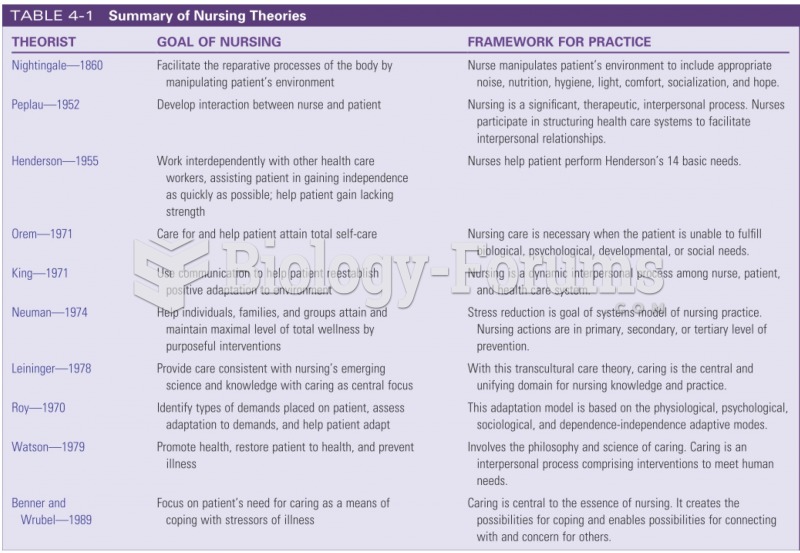|
|
|
Alzheimer's disease affects only about 10% of people older than 65 years of age. Most forms of decreased mental function and dementia are caused by disuse (letting the mind get lazy).
Pregnant women usually experience a heightened sense of smell beginning late in the first trimester. Some experts call this the body's way of protecting a pregnant woman from foods that are unsafe for the fetus.
Prostaglandins were first isolated from human semen in Sweden in the 1930s. They were so named because the researcher thought that they came from the prostate gland. In fact, prostaglandins exist and are synthesized in almost every cell of the body.
Vaccines cause herd immunity. If the majority of people in a community have been vaccinated against a disease, an unvaccinated person is less likely to get the disease since others are less likely to become sick from it and spread the disease.
The B-complex vitamins and vitamin C are not stored in the body and must be replaced each day.
 Exponential growth in the Canadian migratory population of the whooping crane after 70 years of cons
Exponential growth in the Canadian migratory population of the whooping crane after 70 years of cons
 As their numbers grow and their resources and health improve, the elderly will enjoy life more and ...
As their numbers grow and their resources and health improve, the elderly will enjoy life more and ...





